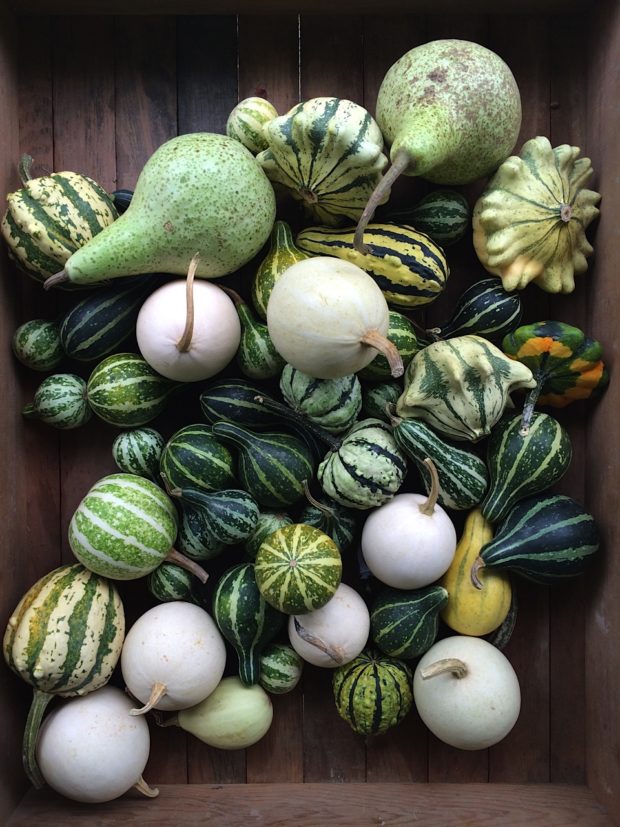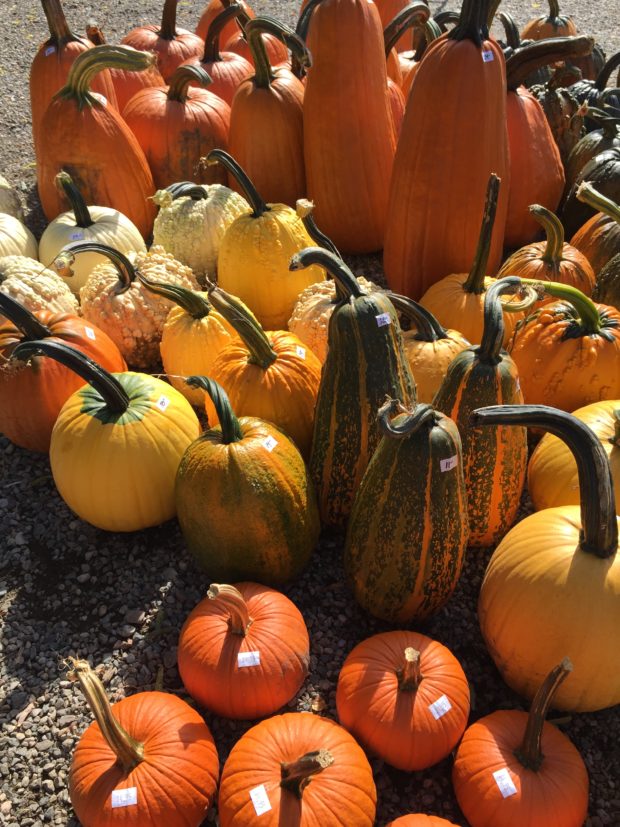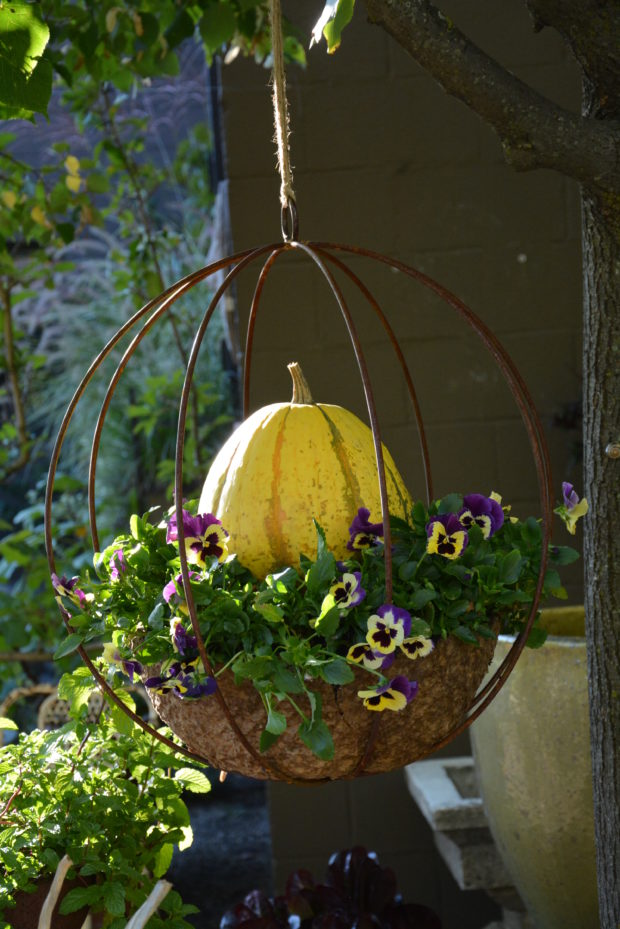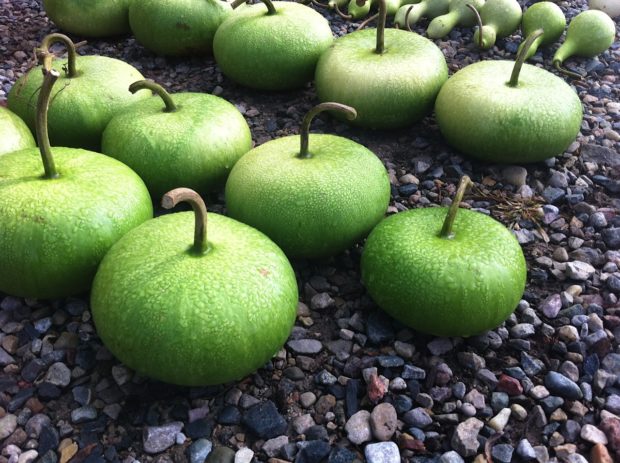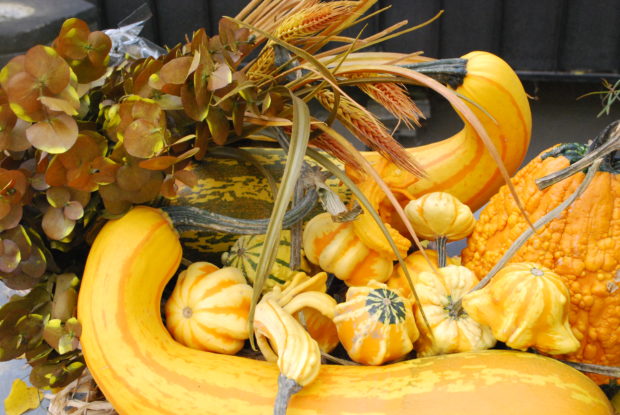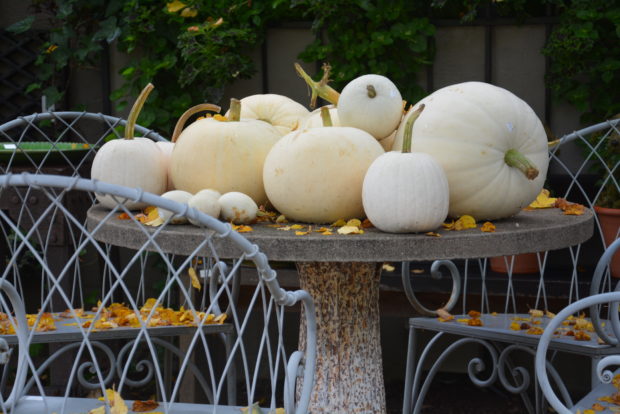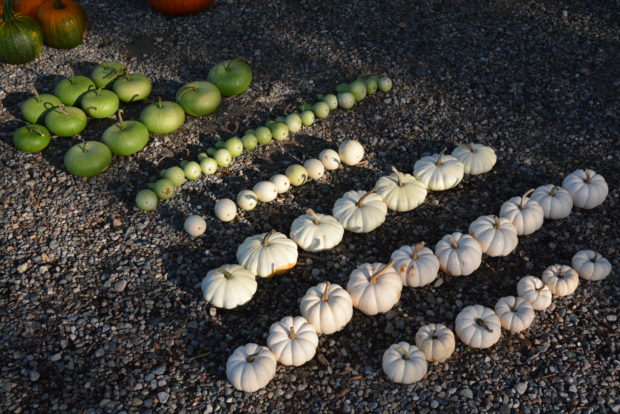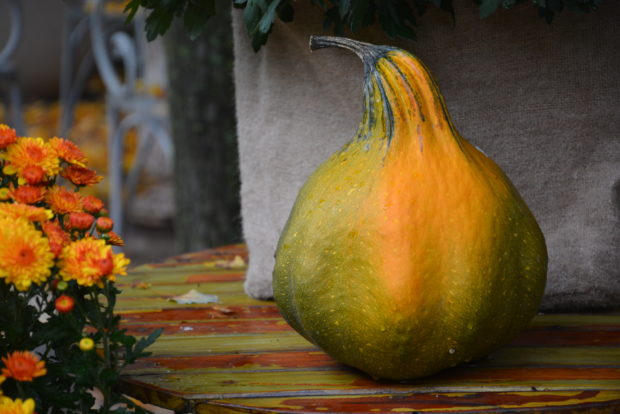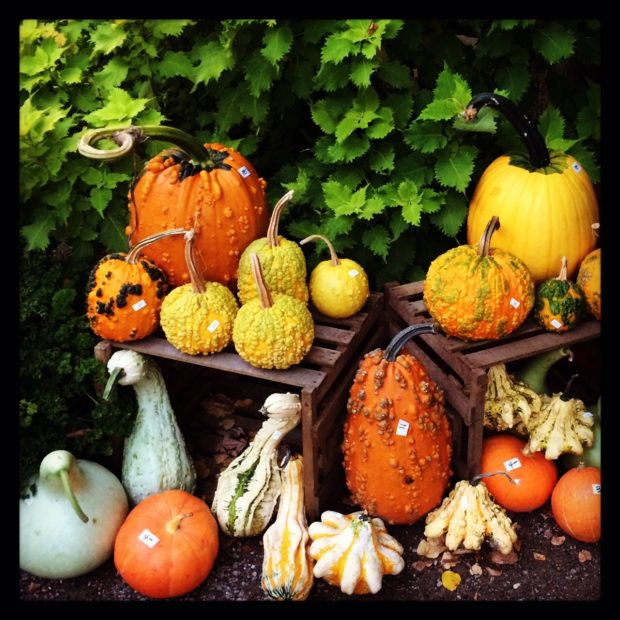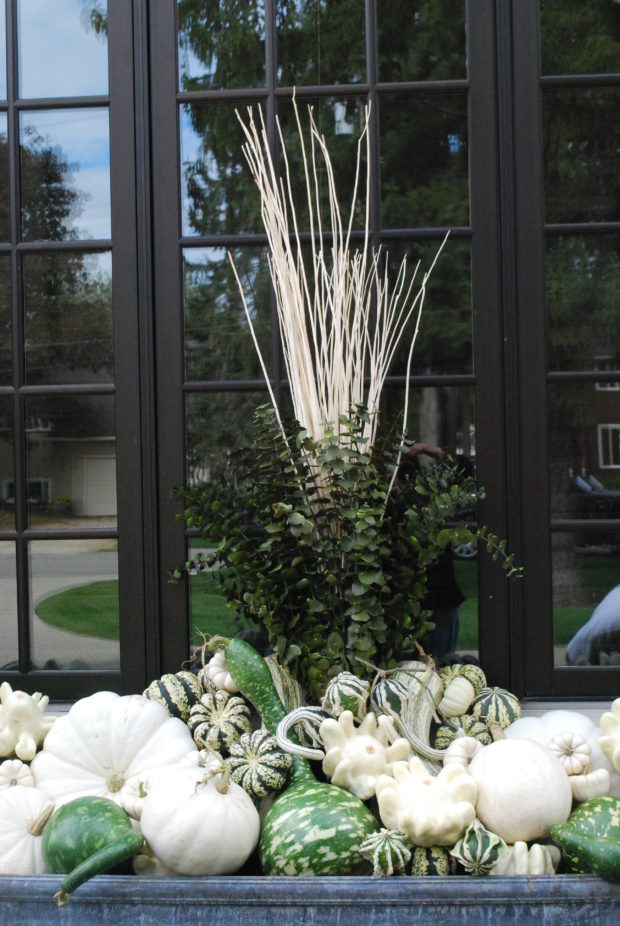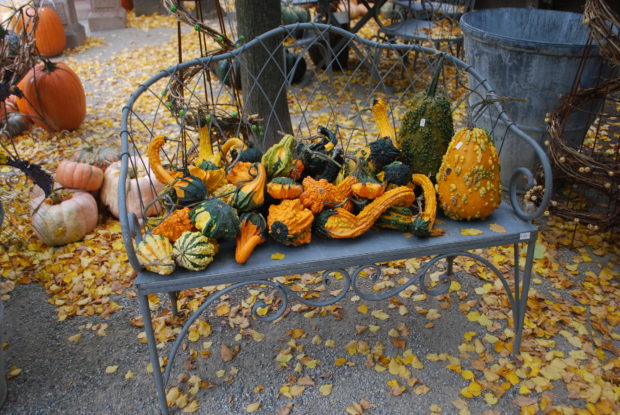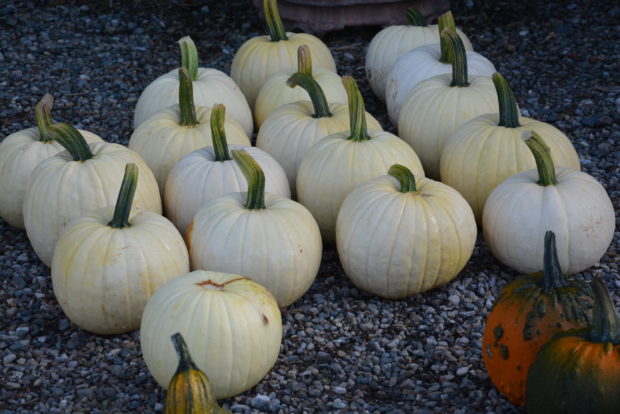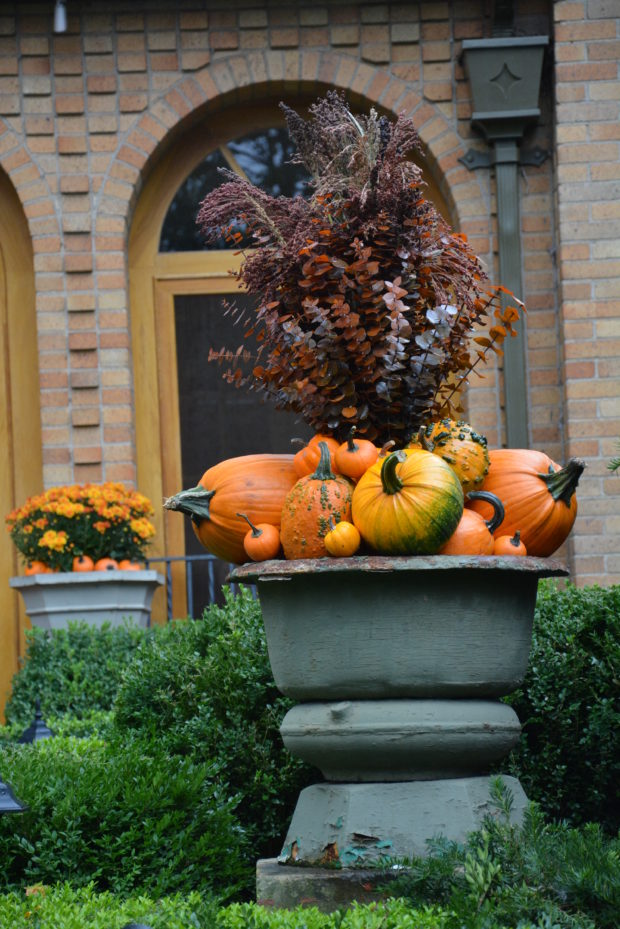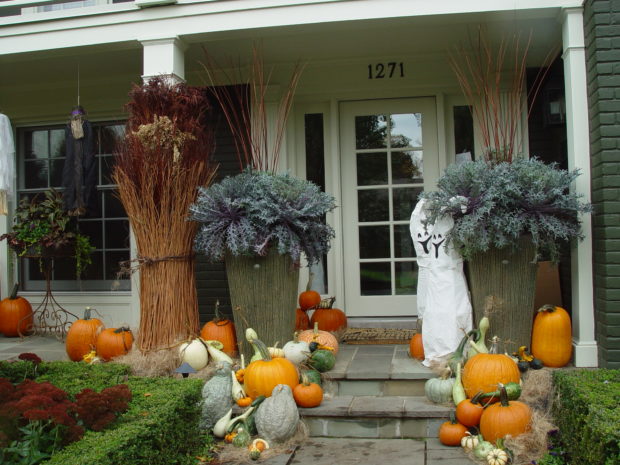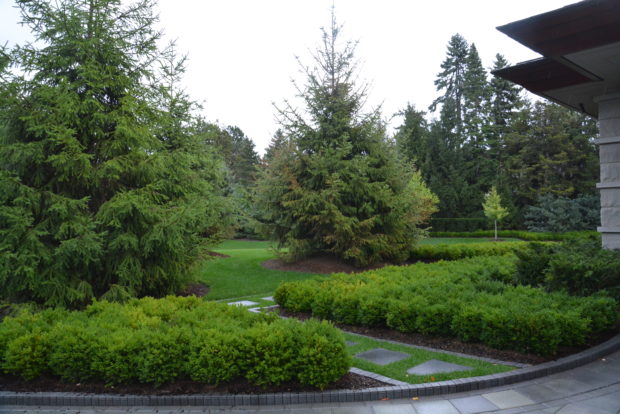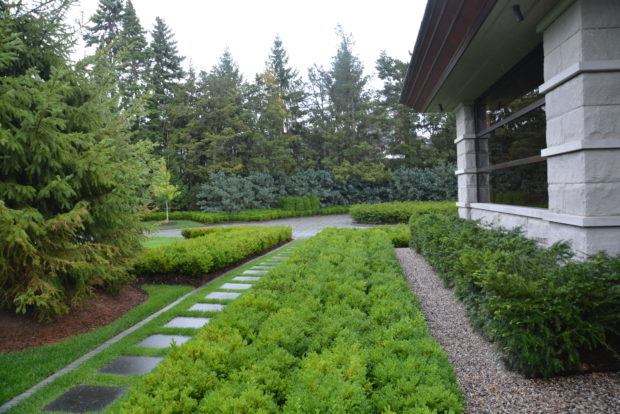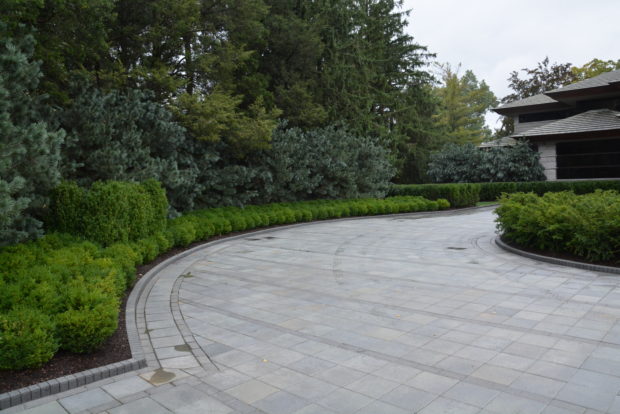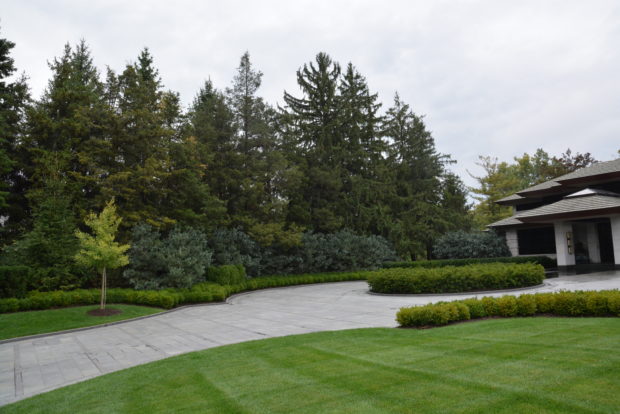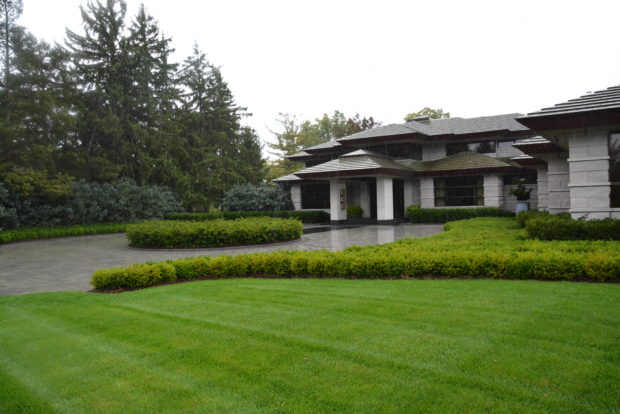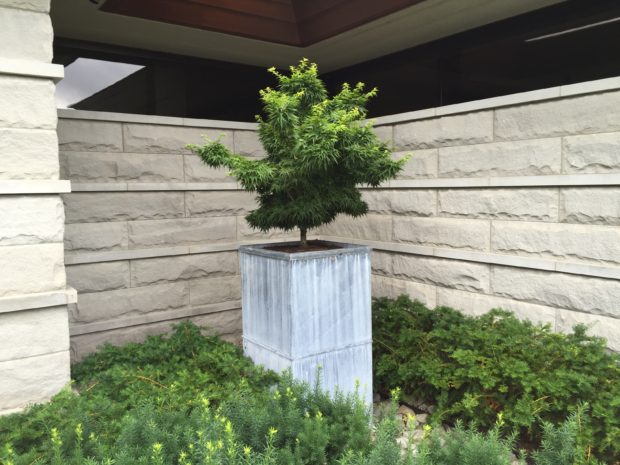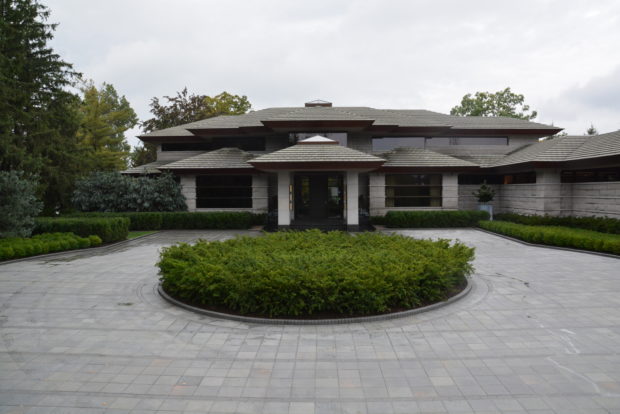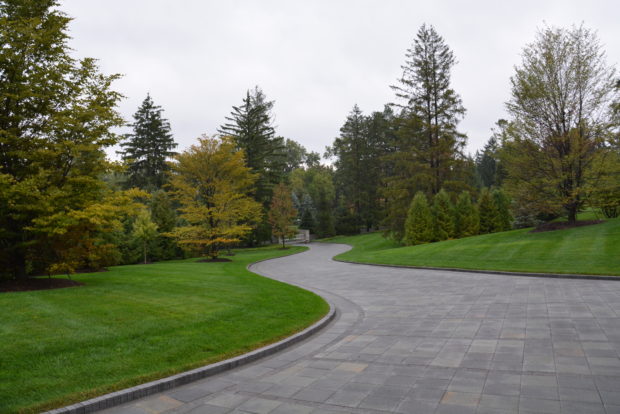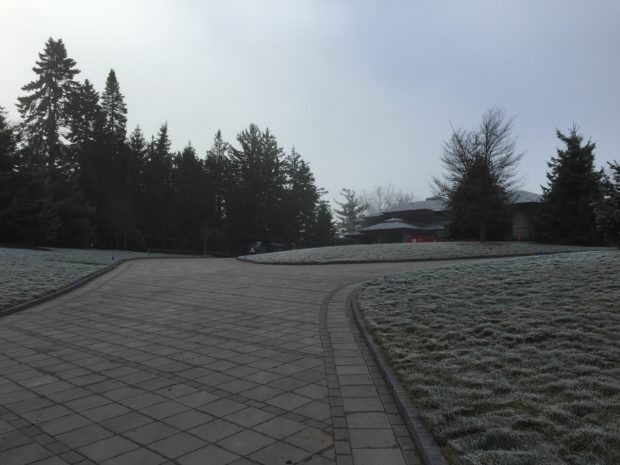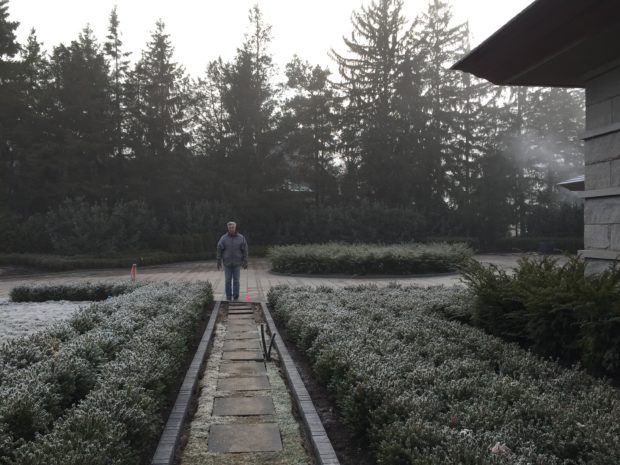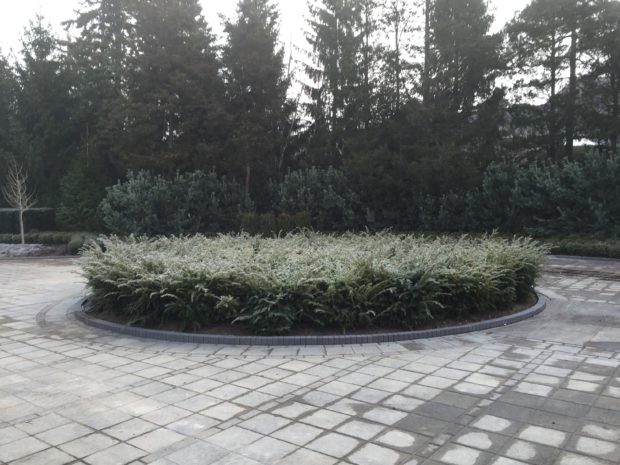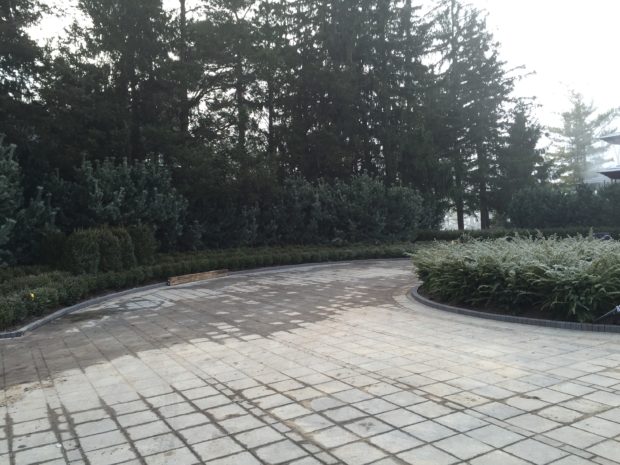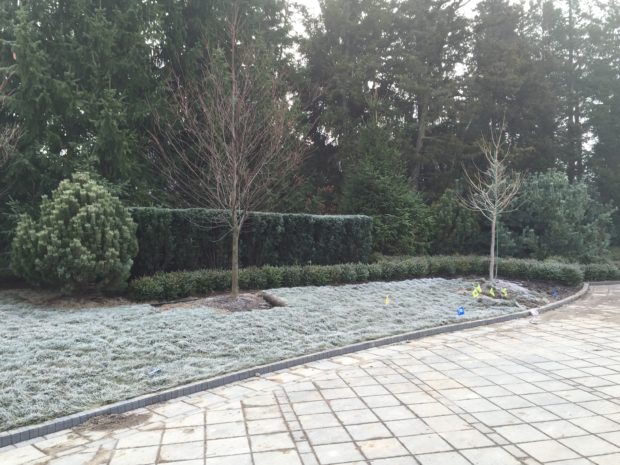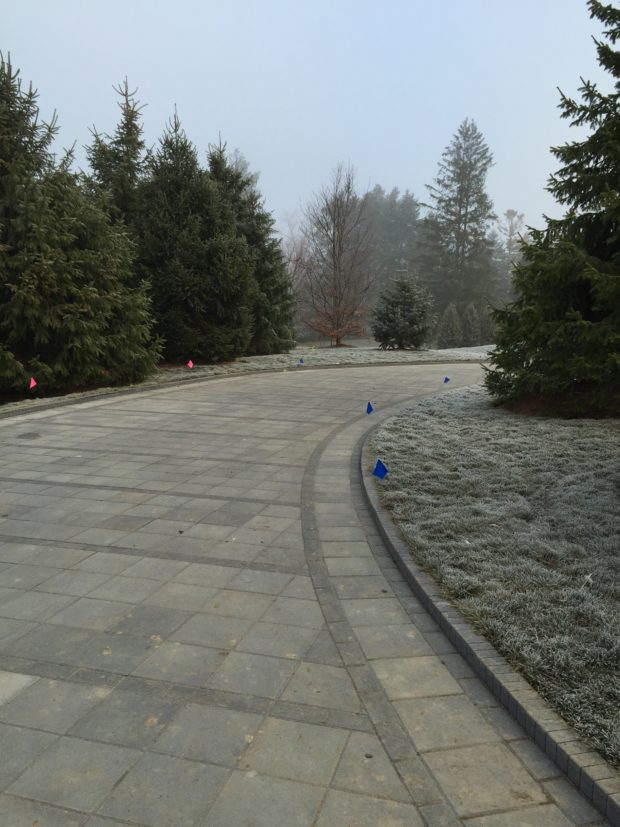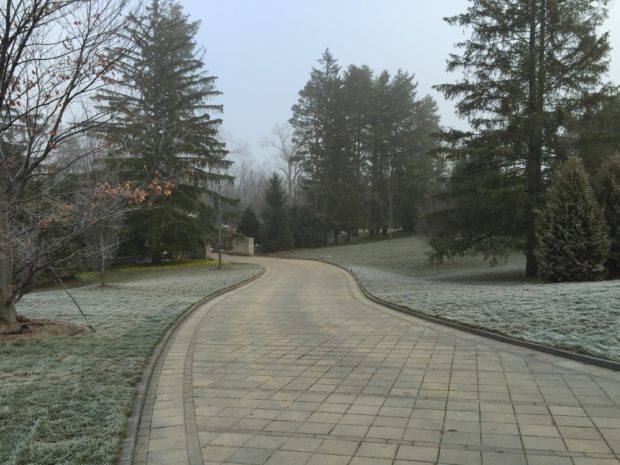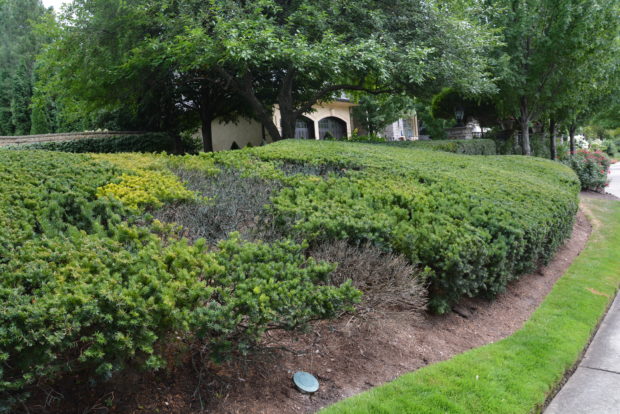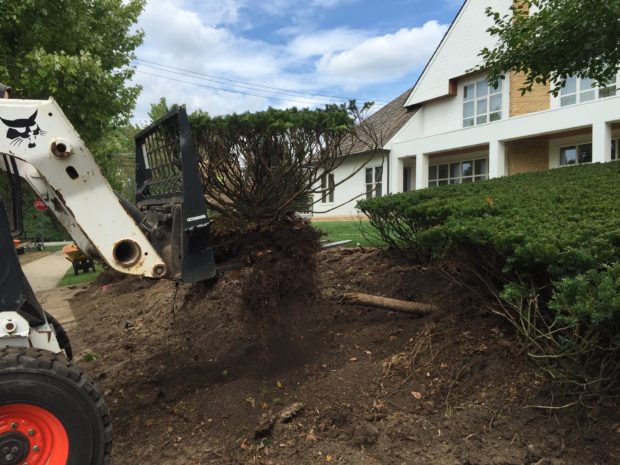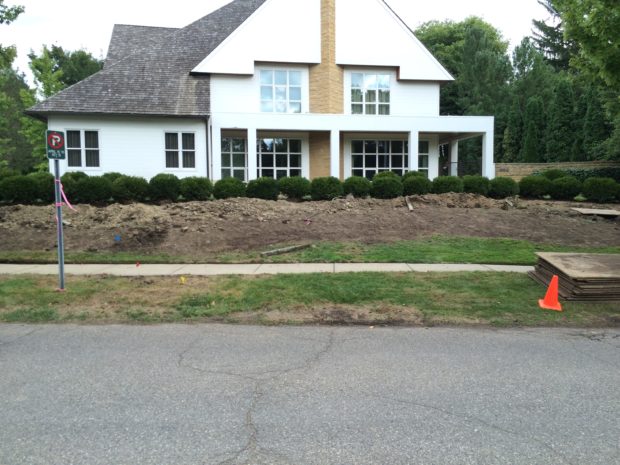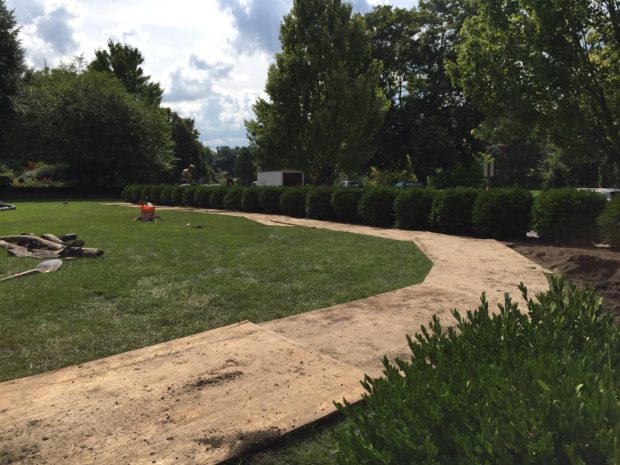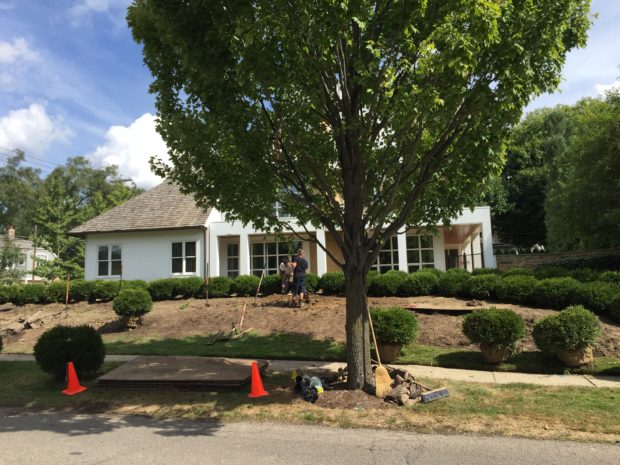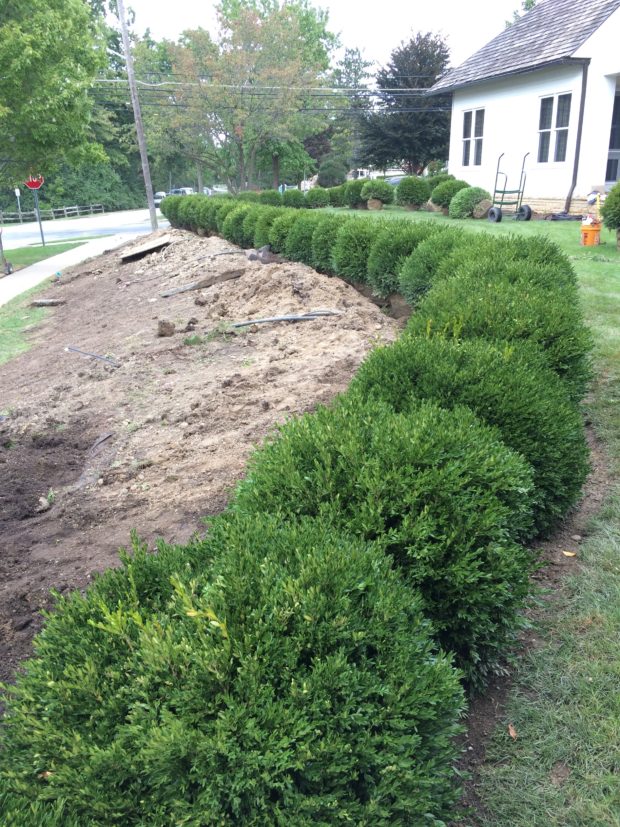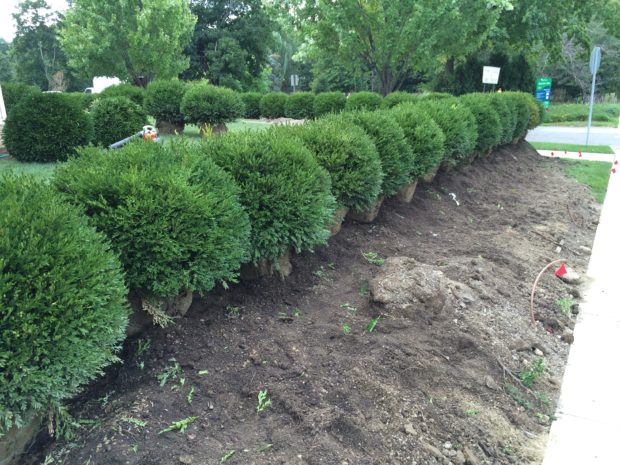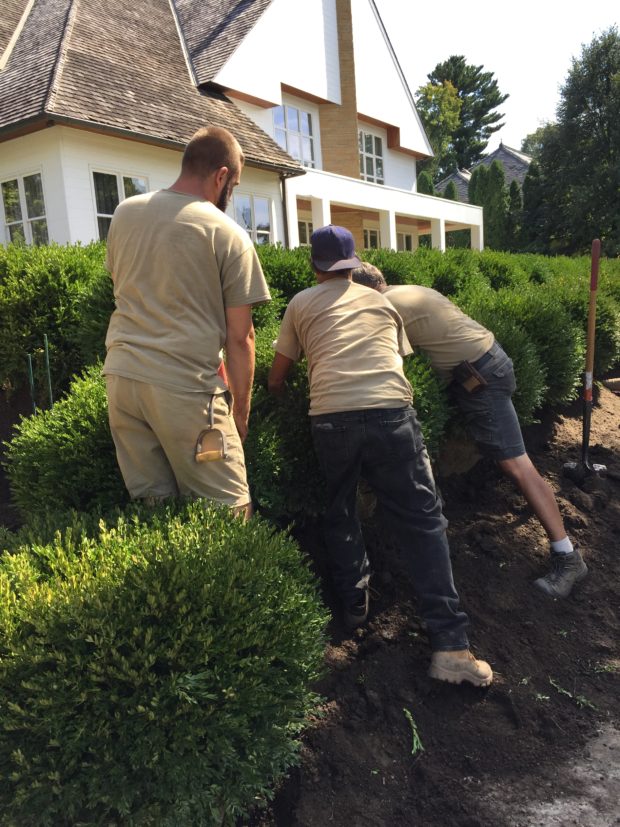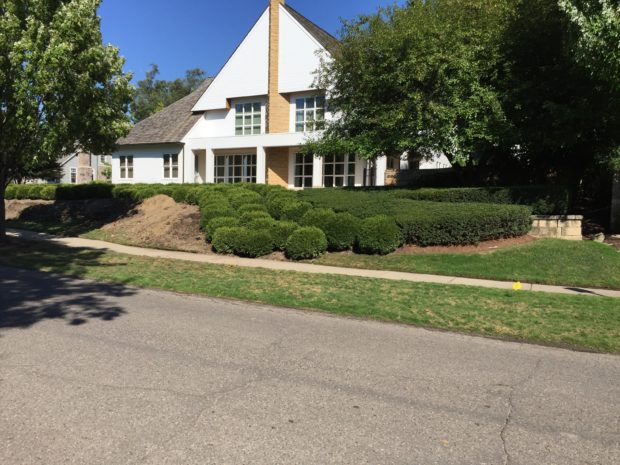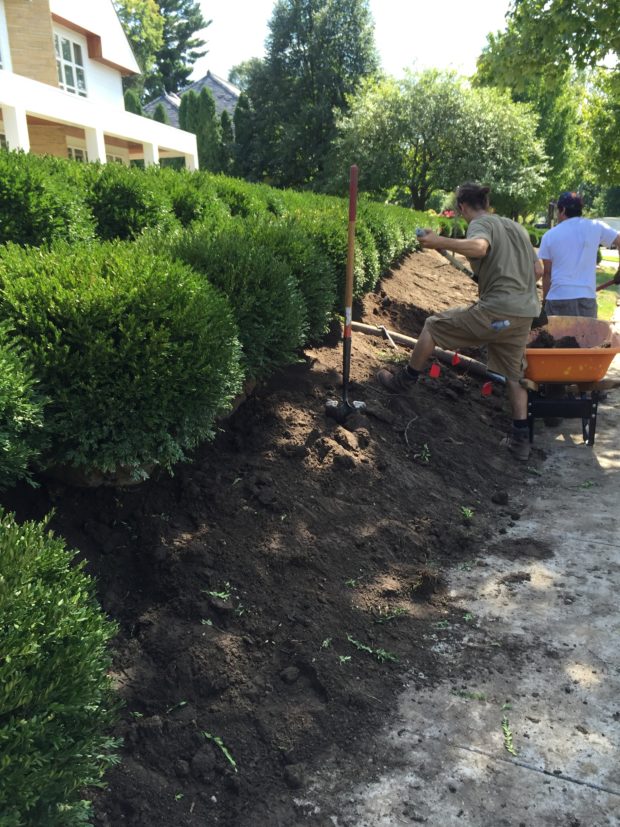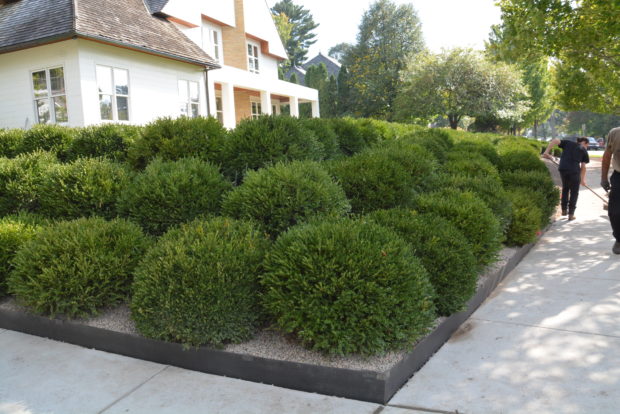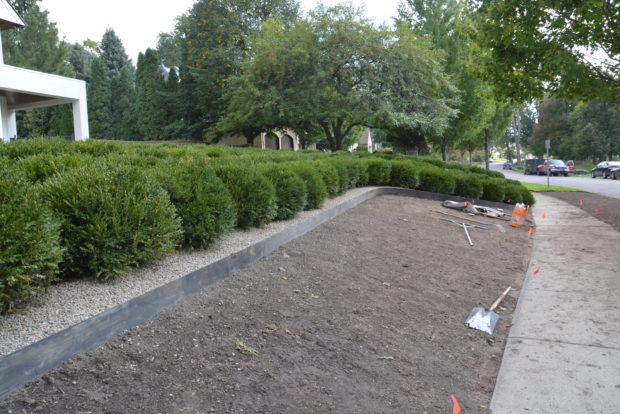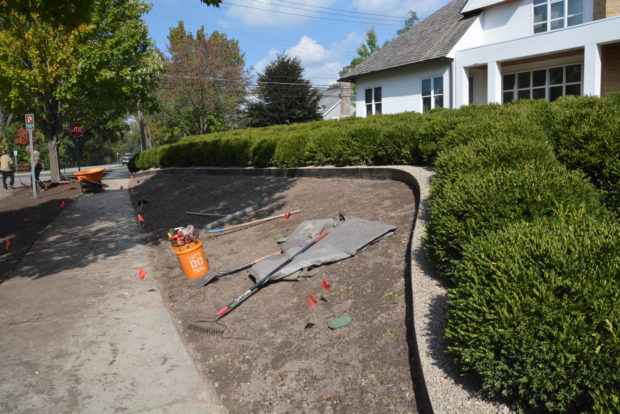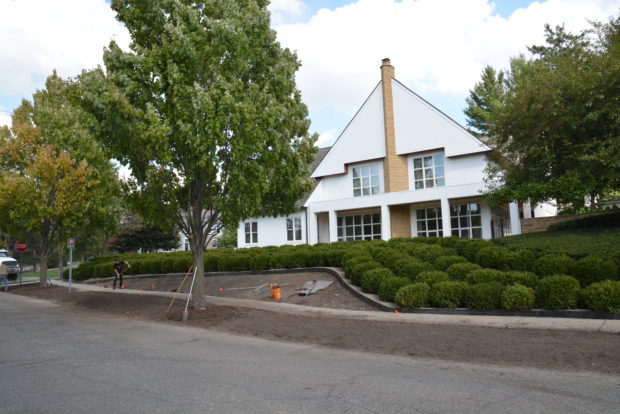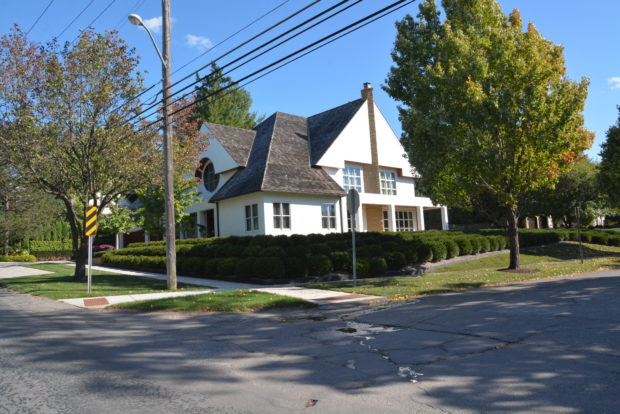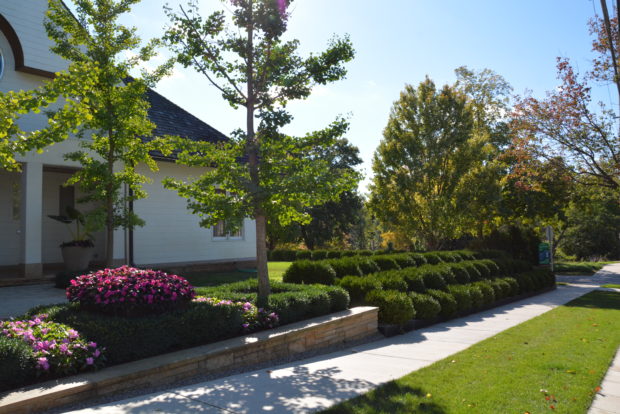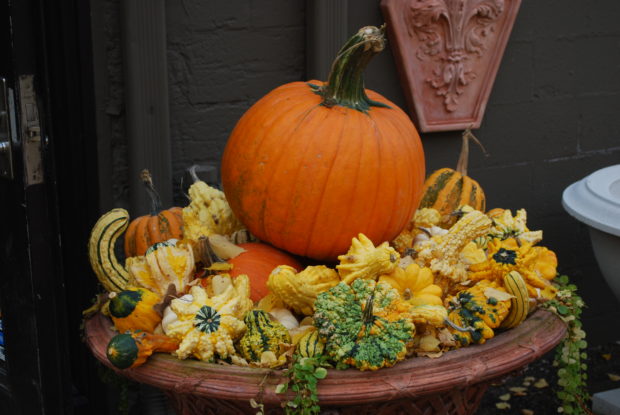 Rob has made 3 epic pumpkin and gourd buying trips in the past 3 weeks. Epic, as in 8 hour trips to pumpkin hybridizers within 80 miles or so in every direction of our shop. Epic, as in the relationships he has cultivated with growers who specialize in these fall fruits. I am sure the gross vehicle weight of the Sprinter loaded with pumpkins and gourds is equally epic. His vetting of pumpkins and gourds one could describe as rigorous. The pumpkins have to stand up on their own. They have to have long and beautifully shaped stems fresh from the picking. Many of those long stems are integral to the pumpkin body. They have great shapes. Unusual surfaces. Incredible color. Who knew there were black or pale yellow or blue pumpkins? Considerable is the education I have had about pumpkins and gourds in recent years. They have colorful and descriptive names. Long Island Cheese. Knucklehead. Porcelain Doll. Many of them have already gone to gardening homes. Many more will snapped up this week, in advance of Halloween and in anticipation of Thanksgiving.
Rob has made 3 epic pumpkin and gourd buying trips in the past 3 weeks. Epic, as in 8 hour trips to pumpkin hybridizers within 80 miles or so in every direction of our shop. Epic, as in the relationships he has cultivated with growers who specialize in these fall fruits. I am sure the gross vehicle weight of the Sprinter loaded with pumpkins and gourds is equally epic. His vetting of pumpkins and gourds one could describe as rigorous. The pumpkins have to stand up on their own. They have to have long and beautifully shaped stems fresh from the picking. Many of those long stems are integral to the pumpkin body. They have great shapes. Unusual surfaces. Incredible color. Who knew there were black or pale yellow or blue pumpkins? Considerable is the education I have had about pumpkins and gourds in recent years. They have colorful and descriptive names. Long Island Cheese. Knucklehead. Porcelain Doll. Many of them have already gone to gardening homes. Many more will snapped up this week, in advance of Halloween and in anticipation of Thanksgiving.
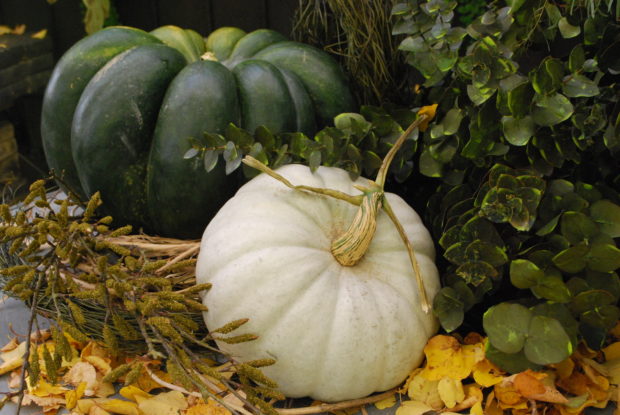 A gardening customer came in today, her husband in tow. She and Sunne launched into a discussion about something or another. Her husband found a place to sit on a bench outdoors. Milo and I joined him. Only moments later he asked me, so what do you do with these pumpkins? Hilarious, this. I burst out laughing. Indeed, what does one do with a pumpkin? To follow are my answers. As for the above picture, I would contrast a green and a white pumpkin, and shower them with green eucalyptus and some yellow fall leaves conveniently shed by a nearby linden tree.
A gardening customer came in today, her husband in tow. She and Sunne launched into a discussion about something or another. Her husband found a place to sit on a bench outdoors. Milo and I joined him. Only moments later he asked me, so what do you do with these pumpkins? Hilarious, this. I burst out laughing. Indeed, what does one do with a pumpkin? To follow are my answers. As for the above picture, I would contrast a green and a white pumpkin, and shower them with green eucalyptus and some yellow fall leaves conveniently shed by a nearby linden tree.
 plant a vintage bushel basket with a single grand white pumpkin, and face it down with white ornamental cabbage.
plant a vintage bushel basket with a single grand white pumpkin, and face it down with white ornamental cabbage.
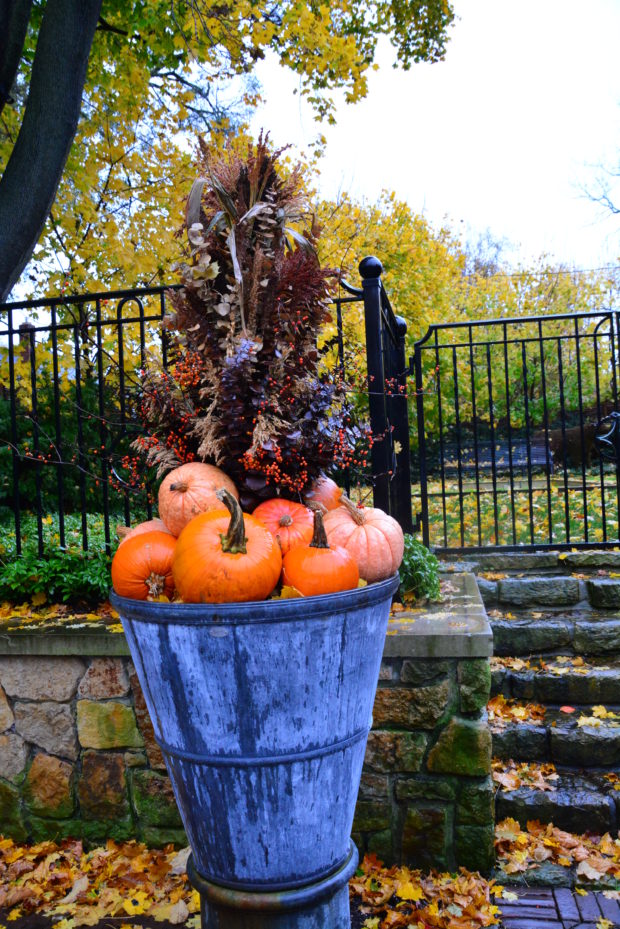 incorporate them into a fall container.
incorporate them into a fall container.
 add them to a fall themed window box
add them to a fall themed window box
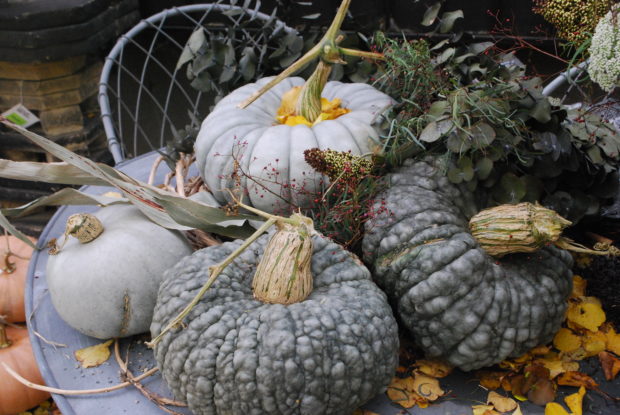 arrange them by color and texture
arrange them by color and texture

